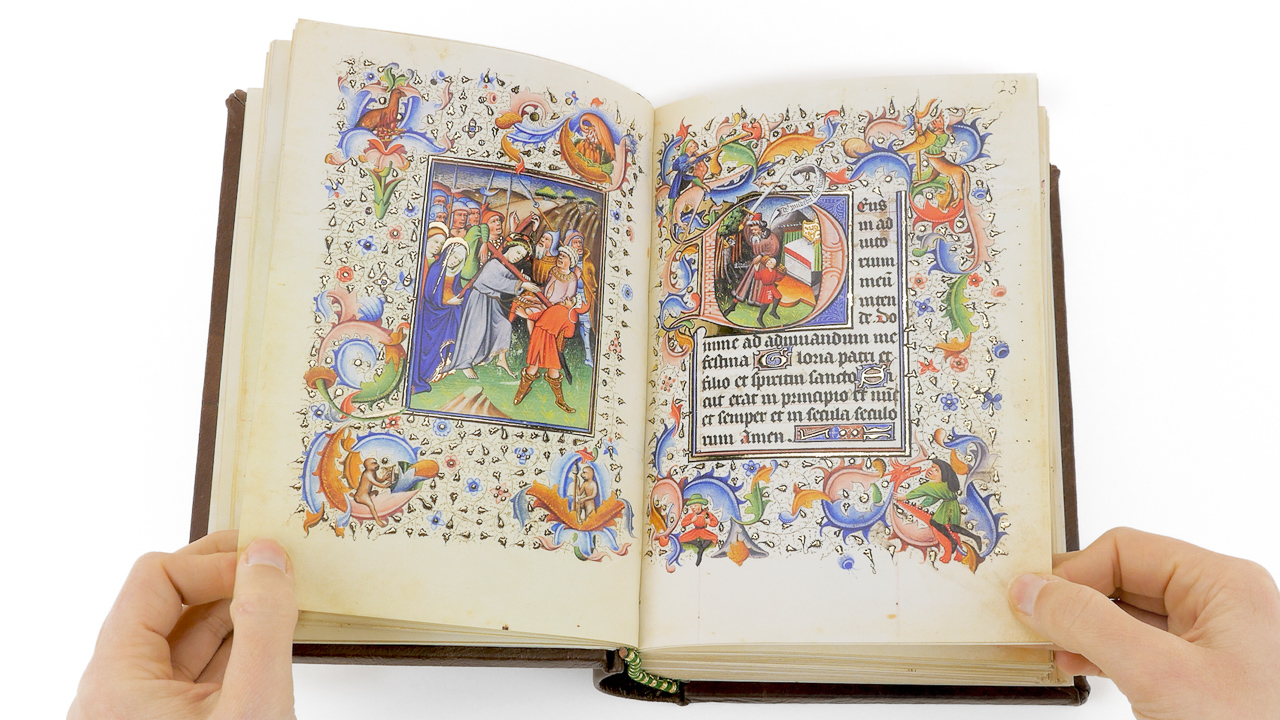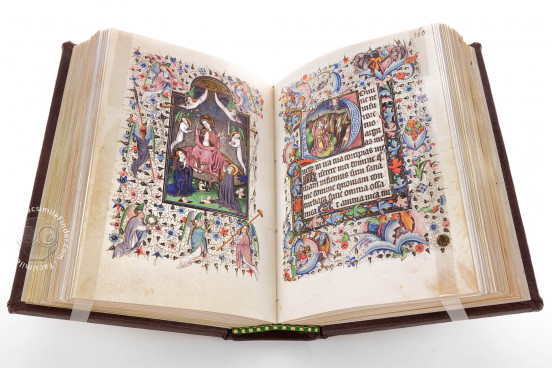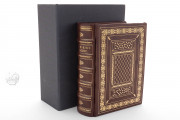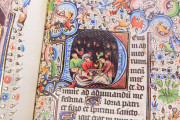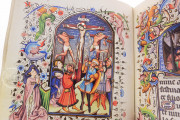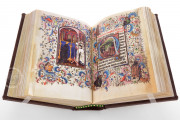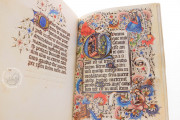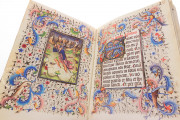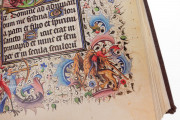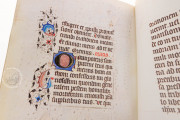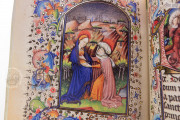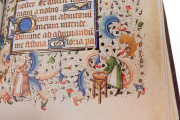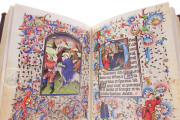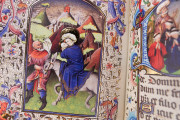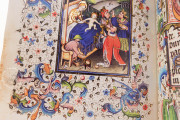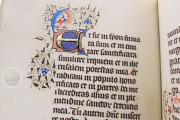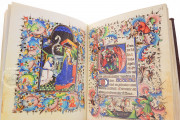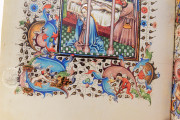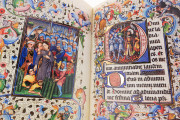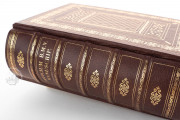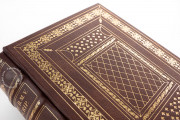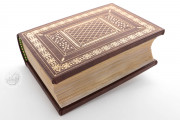The Hours of the Master of Guillebert de Mets in the Biblioteca Universitaria di Bologna, a book of Christian devotional texts, is the product of an encounter between a powerful patron and a skilled artist, who together helped bring the art of illumination to new heights. Made in Ghent at some time between 1430 and 1440, it features colorful painted borders distinctive for their heavy acanthus leaves and generous use of silver leaf. The manuscript is also decorated with twenty-three large miniatures and nearly as many historiated initials.
The manuscript owes its familiar name to its illuminator, the Master of Guillebert de Mets. He, in turn, derives his name from a manuscript of Boccaccio's Decameron signed by the scribe Guillebert de Mets. The anonymous illuminator collaborated frequently with this scribe, who appears to have been in the service of the dukes of Burgundy.
A Masterwork of the Master
The Master of Guillebert de Mets was probably trained in Paris and was based in Ghent, where he found many clients who energized a prolific output of both manuscripts for personal devotion and secular codices. The elaborate borders and top-rate miniatures in this book of hours make it one of the most sophisticated products from the master's brush.
The work of the Master of Guillebert de Mets is identifiable above all else by the painted borders with fleshy acanthus and engaging figures—human, angel, animal, and imagined—in the corners. A wonderful ensemble, for example, introduces the Athanasian Creed (fol. 257r). The initial Q that begins the profession of faith contains the scene of Joseph Interpreting the Dream of the Pharoah's Butler. In the border are pictured four Christian sages, each wearing an exotic headdress and seated on an outsized sprout of acanthus. Their banderoles contain aphorisms about the nature of faith.
Made for Someone at the Court of Philip the Good
The manuscript's text, focused on the Hours of the Virgin, is written in Gothic Textualis, the formal script preferred for liturgical and devotional texts. The manuscript opens with a calendar that features saints celebrated in the diocese of Utrecht.
Scholars suspect that the manuscript was commissioned by a member of the court of Philip the Good, Duke of Burgundy, for his wife. Indeed, an emphasis on Saint Barbara in the manuscript might indicate the personalization of this book for a woman named Barbara, who could well be the figure painted in the decorated border of the Crucifixion miniature (fol. 29v), clasping her hands and kneeling before her open book while meditating on the emotional scene.
From Italy to France and Back
Although the book's early history is unknown, Charles Emanuele III (1701-1773), King of Sardina and Duke of Savoy, may have given it to Durante Duranti (1718-1780), Count of Brescia. Duranti gave the manuscript to "the valiant Father Abate Trombelli," who later donated it to the library of the church of Santissimo Salvatore in Bologna. The book was taken to France in the wake of the Napoleonic invasion of Italy. After its return, the canons of Santissimo Salvatore purportedly donated it in 1828 to the then "Biblioteca Pontificia," whence it eventually entered the collection of the Biblioteca Universitaria di Bologna.
We have 1 facsimile edition of the manuscript "Hours of the Master of Guillebert de Mets": Offiziolo di Guillebert di Metz facsimile edition, published by Imago, 2020
Request Info / Price
